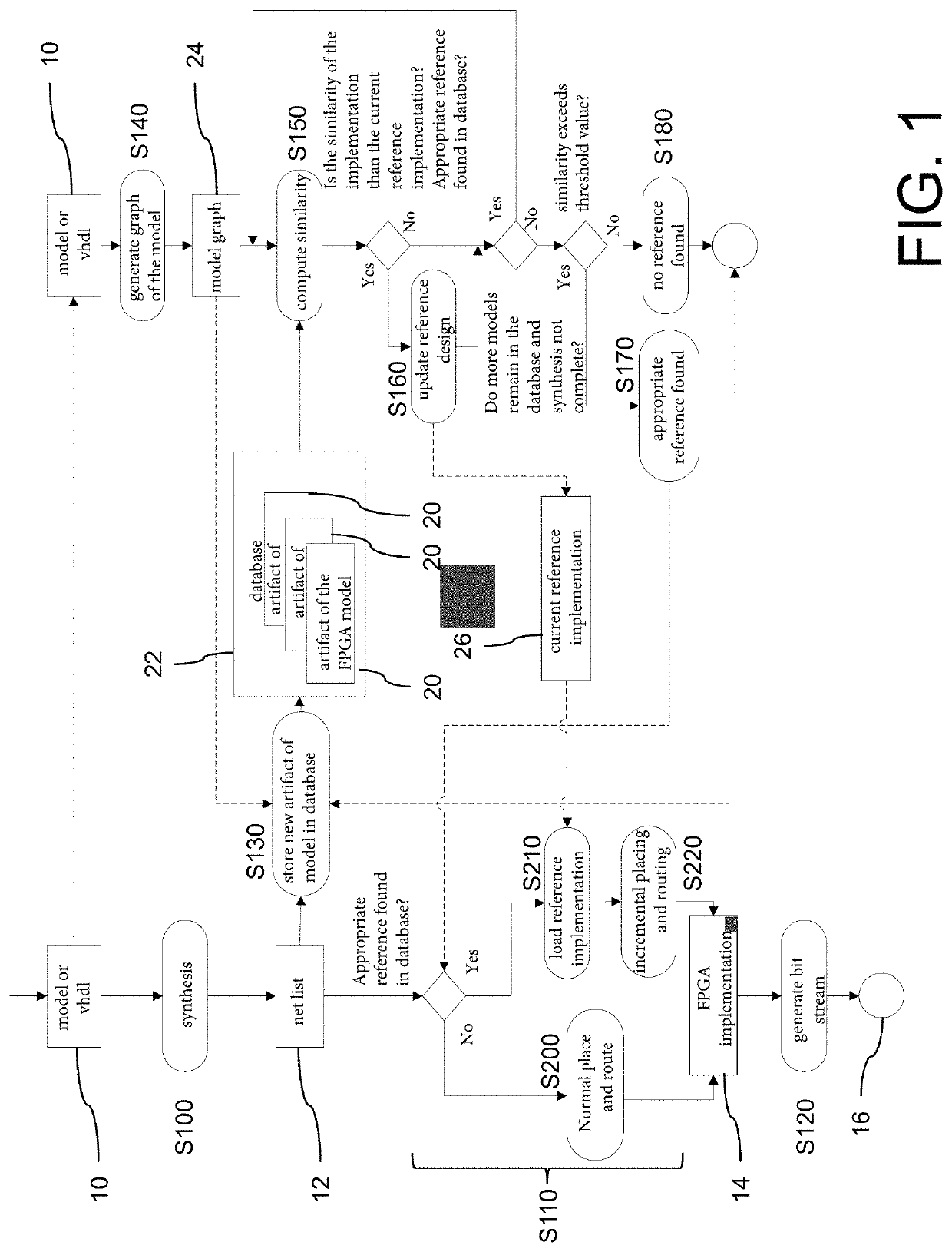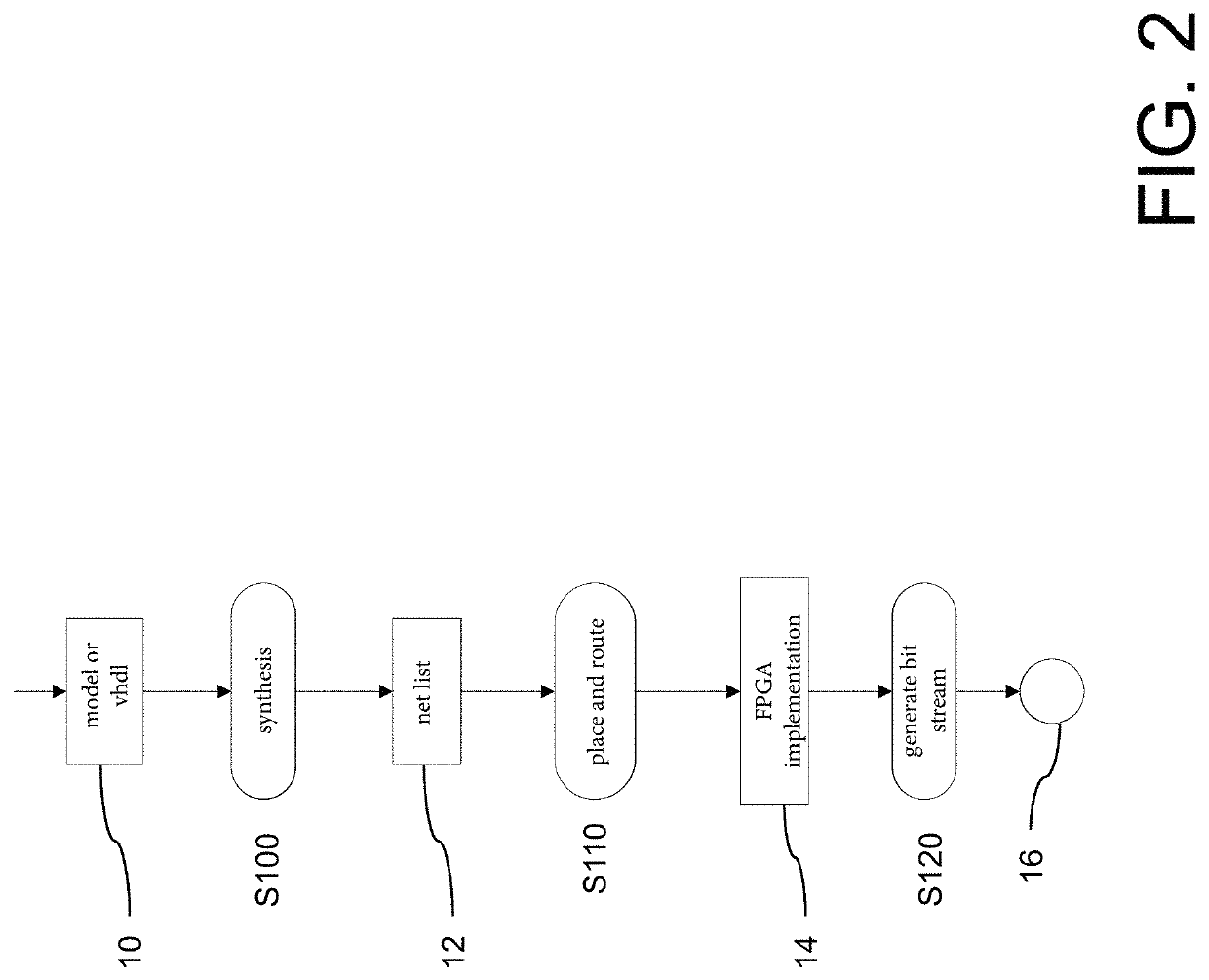Incremental generation of an FPGA implementation with a graph-based similarity search
a technology of similarity search and fpga implementation, which is applied in the field of increasing the generation of fpga implementations with graph-based similarity searches, can solve the problem of reducing the time it takes to generate fpga builds, and achieve the effect of simple and efficient generation of fpga implementations
- Summary
- Abstract
- Description
- Claims
- Application Information
AI Technical Summary
Benefits of technology
Problems solved by technology
Method used
Image
Examples
Embodiment Construction
[0056]FIGS. 1 to 4 illustrate a method for generating an FPGA implementation and a bit stream from the FPGA implementation, based on an FPGA design as an FPGA model and / or a hardware description.
[0057]As the starting point of the method, an FPGA design 10 is generated and provided as a graphic FPGA model. The FPGA model is then translated to a hardware description language, in this case, for example, VHDL (VHDL).
[0058]Based on this, a build can be started which first comprises the steps S100, S110 and S120 described in detail below.
[0059]In step S100, a net list 12 is synthesized from the FPGA design 10. The net list 12 includes logic elements and their interconnections as indicated in the FPGA design 10.
[0060]In step S110, an FPGA implementation 14 is generated from the net list 12. This step is commonly referred to as “place and route”. The logic elements stored in the netlist 12 are placed for the FPGA (place) and connected to each other according to the net list 12 (route). The ...
PUM
 Login to View More
Login to View More Abstract
Description
Claims
Application Information
 Login to View More
Login to View More - R&D
- Intellectual Property
- Life Sciences
- Materials
- Tech Scout
- Unparalleled Data Quality
- Higher Quality Content
- 60% Fewer Hallucinations
Browse by: Latest US Patents, China's latest patents, Technical Efficacy Thesaurus, Application Domain, Technology Topic, Popular Technical Reports.
© 2025 PatSnap. All rights reserved.Legal|Privacy policy|Modern Slavery Act Transparency Statement|Sitemap|About US| Contact US: help@patsnap.com



